
The Majestic Mirror of the Sky: Salar de Uyuni
Discover the surreal beauty and cultural richness of Salar de Uyuni in Bolivia, the world's largest salt flat and nature's stunning mirror to the sky.
Salar de Uyuni, located in southwest Bolivia, is the world's largest salt flat, stretching over 10,000 square kilometers. This natural wonder is a breathtaking sight, especially during the rainy season when a thin layer of water transforms the flat into a giant mirror, reflecting the sky and creating a surreal, otherworldly landscape. Visitors often describe the experience as stepping into a dreamscape. The salt flat is also home to vast salt mines, where the salt is harvested by local workers. The bright white expanse is dotted with hexagonal patterns formed by the natural crystallization process. At the heart of Salar de Uyuni lies the Isla Incahuasi, a hilly and rocky outcrop covered in giant cacti, providing a stark contrast to the flatness of the surrounding salt. Beyond its natural beauty, Salar de Uyuni is rich in cultural history. The area is inhabited by indigenous people who have lived there for centuries. Visitors can learn about their traditions, sample local cuisine, and even stay in unique salt hotels, where the walls, furniture, and even the beds are made entirely of salt. Whether you're an avid photographer, a nature lover, or a culture enthusiast, Salar de Uyuni offers an unforgettable adventure.
Local tips in Salar de Uyuni
- Visit during the rainy season (December to April) to see the mirror effect.
- Bring sunglasses and sunscreen, as the sun's reflection off the salt can be intense.
- Wear layers; it can get very cold at night and early morning.
- Consider a guided tour to get the most out of your visit and to safely navigate the salt flat.
- Try the local cuisine, especially dishes featuring quinoa and llama meat.
- Stay in one of the unique salt hotels for an unforgettable experience.
The Majestic Mirror of the Sky: Salar de Uyuni
Salar de Uyuni, located in southwest Bolivia, is the world's largest salt flat, stretching over 10,000 square kilometers. This natural wonder is a breathtaking sight, especially during the rainy season when a thin layer of water transforms the flat into a giant mirror, reflecting the sky and creating a surreal, otherworldly landscape. Visitors often describe the experience as stepping into a dreamscape. The salt flat is also home to vast salt mines, where the salt is harvested by local workers. The bright white expanse is dotted with hexagonal patterns formed by the natural crystallization process. At the heart of Salar de Uyuni lies the Isla Incahuasi, a hilly and rocky outcrop covered in giant cacti, providing a stark contrast to the flatness of the surrounding salt. Beyond its natural beauty, Salar de Uyuni is rich in cultural history. The area is inhabited by indigenous people who have lived there for centuries. Visitors can learn about their traditions, sample local cuisine, and even stay in unique salt hotels, where the walls, furniture, and even the beds are made entirely of salt. Whether you're an avid photographer, a nature lover, or a culture enthusiast, Salar de Uyuni offers an unforgettable adventure.
When is the best time to go to Salar de Uyuni?
Iconic landmarks you can’t miss
Uyuni Salt Flat
Discover the breathtaking Uyuni Salt Flat, the world's largest salt flat, known for its surreal landscapes and stunning reflections that captivate every traveler.
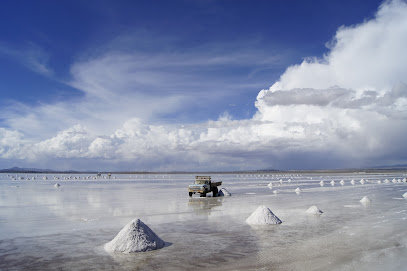
Train Cemetery
Explore the Train Cemetery in Uyuni, Bolivia - a hauntingly beautiful open-air museum of rusting locomotives amidst stunning desert landscapes.
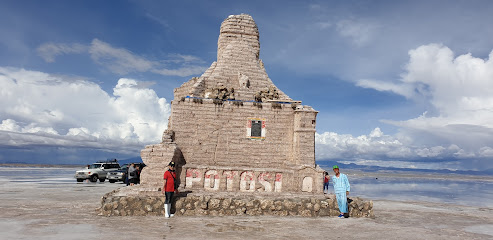
Hotel Luna Salada
Discover the beauty of the Bolivian Altiplano at Hotel Luna Salada, a unique salt hotel near the breathtaking Uyuni Salt Flats.
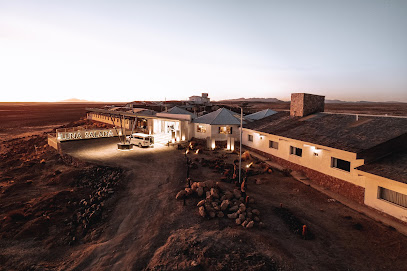
Plaza de las Banderas Uyuni
Experience the cultural vibrance and stunning landscapes of Plaza de las Banderas in Uyuni, a must-visit destination for travelers in Bolivia.
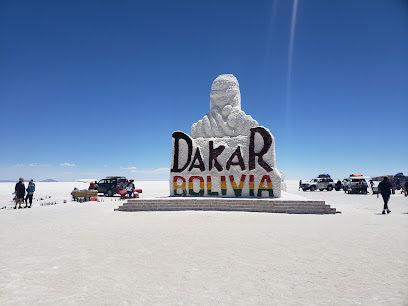
Hotel Palacio de Sal
Experience the enchanting beauty of Bolivia at Hotel Palacio de Sal, the world's first salt hotel, offering luxury and adventure amidst stunning landscapes.
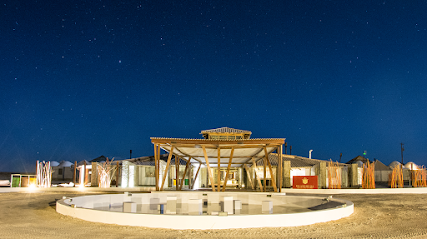
Pakuchi
Explore Pakuchi in Uyuni, a vibrant handicraft market showcasing Bolivia's rich culture through unique artisan goods in a lively plaza atmosphere.
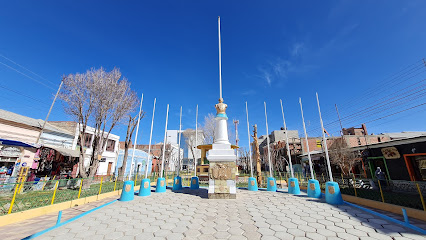
Ojos del Salar
Explore the breathtaking Ojos del Salar, a stunning natural wonder in Bolivia known for its vibrant lagoons and picturesque salt flats, perfect for nature lovers and photographers.
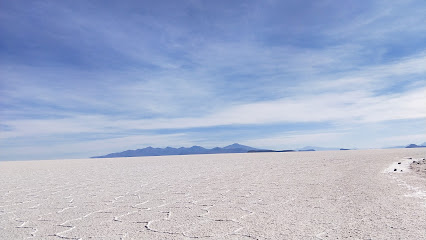
Salt Flats
Explore the captivating Uyuni Salt Flats, where vast reflective landscapes create a surreal experience in the heart of Bolivia's Andes.
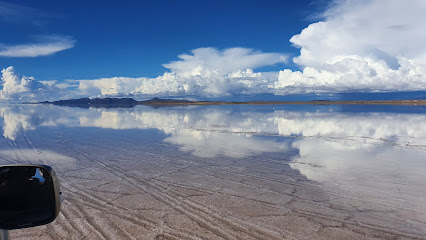
Salar de uyuni
Discover the surreal beauty and cultural richness of Salar de Uyuni, Bolivia's breathtaking salt flats, and a must-visit destination for travelers.
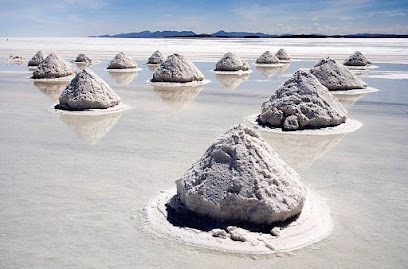
Dakar Monument
Discover the Dakar Monument in Colchani, a stunning tribute to Bolivian heritage, offering breathtaking views and rich cultural experiences.
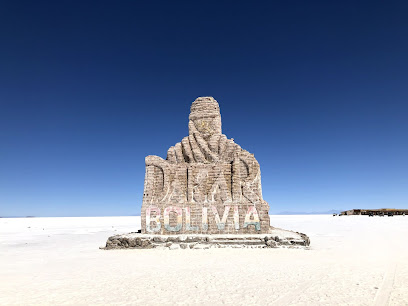
Salt Flats Bolivia
Discover the breathtaking beauty of Bolivia's Salt Flats, a surreal landscape of shimmering salt and stunning reflections, perfect for adventurers and photographers.
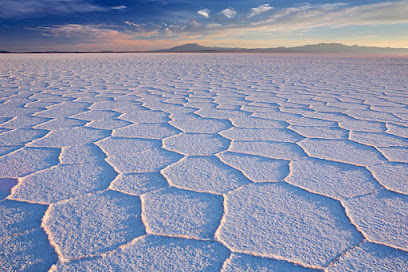
Pearl Bolivia
Discover Uyuni's breathtaking landscapes and rich culture with Pearl Bolivia's expertly guided bus tours, ensuring an unforgettable Bolivian adventure.
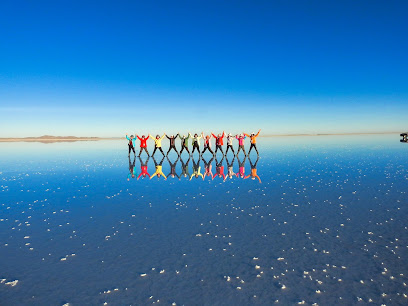
Uyuni Salt Lake
Explore the breathtaking Uyuni Salt Lake, where stunning landscapes meet unique wildlife and unforgettable stargazing experiences.
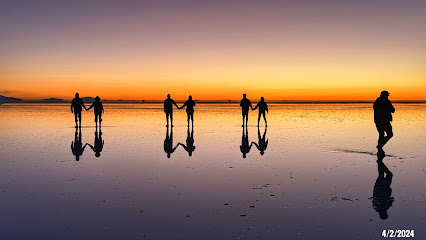
Salar De Uyuni
Discover the surreal beauty of Salar De Uyuni, Bolivia's breathtaking salt flat, where nature creates stunning reflections and unforgettable landscapes.

Atardecer Salar de Uyuni
Discover the breathtaking sunsets at Salar de Uyuni, the largest salt flat in the world, where nature's beauty meets cultural heritage.
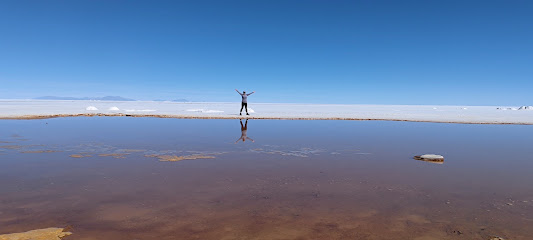
Unmissable attractions to see
Plaza de las Banderas Uyuni
Experience the vibrant culture and stunning views at the Plaza de las Banderas in Uyuni, Bolivia, a must-visit destination for travelers.
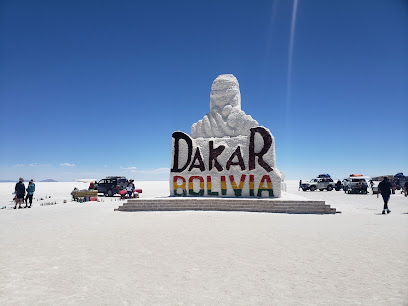
Pakuchi
Experience the vibrant artistry of Bolivia at Pakuchi in Uyuni, a cultural hub of handicrafts and local traditions.
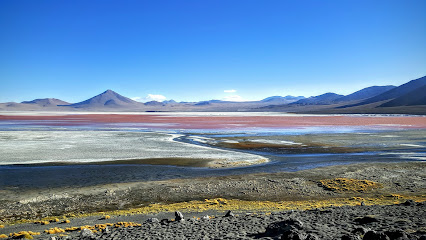
Ojos del Salar
Explore the stunning natural beauty of Ojos del Salar, a captivating attraction near Colchani, Bolivia, featuring mesmerizing lakes and unique landscapes.
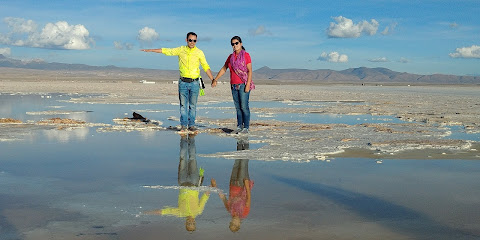
Uyuni Bolivia
Explore the surreal beauty of Uyuni, Bolivia's stunning salt flats, vibrant culture, and unique wildlife experiences.
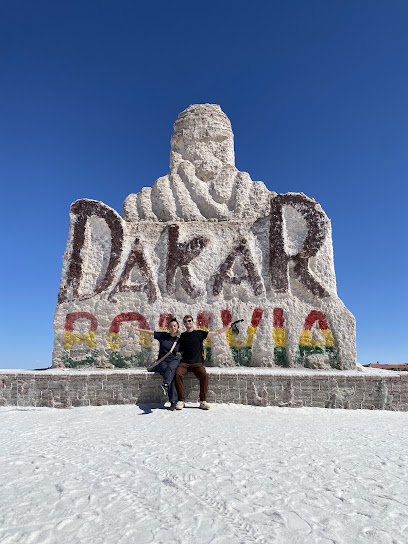
Atardecer Salar de Uyuni
Discover the stunning sunsets of Salar de Uyuni, where the sky meets the earth in a breathtaking display of colors and reflections.
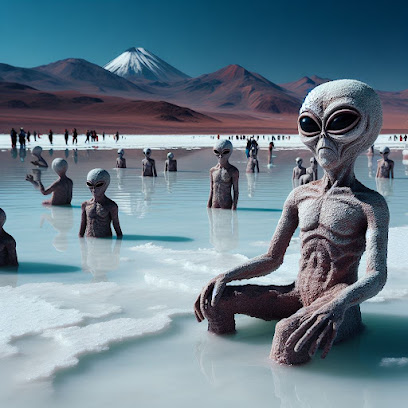
Escalera al Cielo
Discover the breathtaking Escalera al Cielo in Colchani, Bolivia, a stunning tourist attraction offering panoramic views of the mesmerizing Salar de Uyuni.
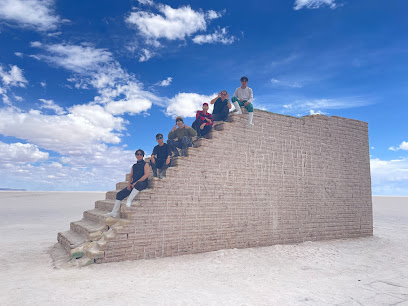
Arco de coral
Explore the breathtaking Arco de Coral on Isla Incahuasi, a stunning natural wonder in Bolivia, perfect for nature lovers and adventure seekers.
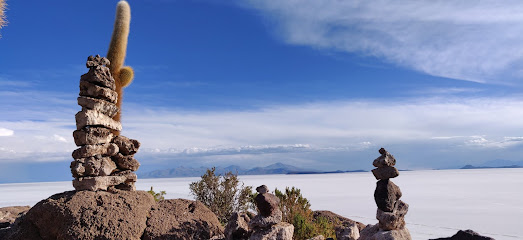
Reloj Central
Discover the vibrant heart of Uyuni at Reloj Central, a historic clock tower symbolizing local culture and community.
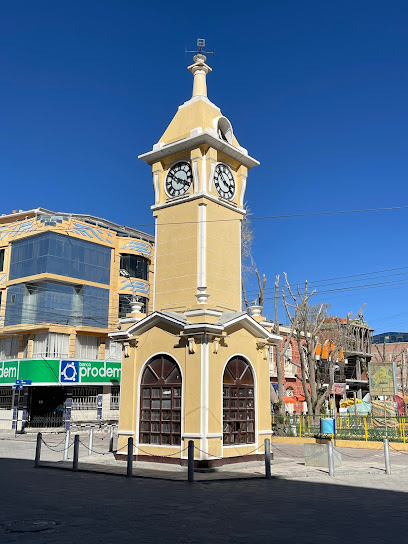
Isla Pia Pia
Discover the breathtaking Isla Pia Pia, a stunning island in Salar de Uyuni surrounded by the world's largest salt flat, perfect for adventure seekers and nature lovers.

Uyuni State Park
Experience the breathtaking beauty of Uyuni State Park, home to the world's largest salt flat and stunning natural landscapes.
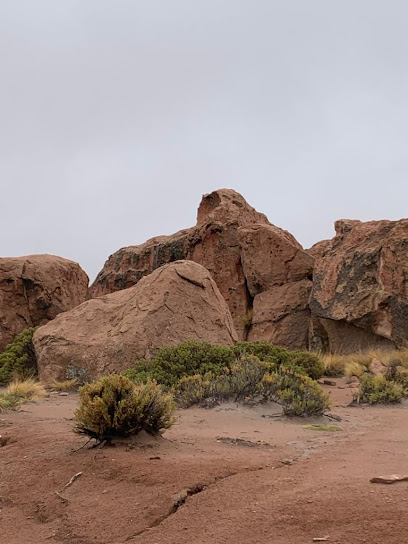
Uyuni Observatory
Explore the wonders of the universe at Uyuni Observatory, Bolivia's premier destination for stargazing and astronomical adventures amidst stunning landscapes.
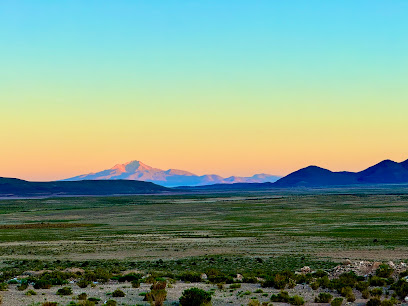
Uyuni
Experience the surreal beauty of Uyuni, Bolivia's breathtaking salt flats and vibrant natural landscapes, perfect for adventure seekers and photographers alike.
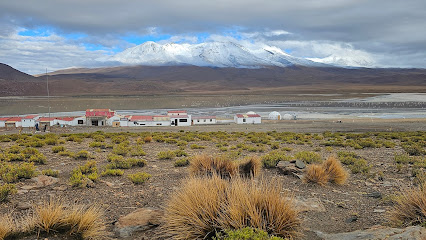
Full atardecer
Experience the breathtaking beauty of Salar de Uyuni, the world's largest salt flat, where stunning sunsets create a magical mirror effect on the landscape.
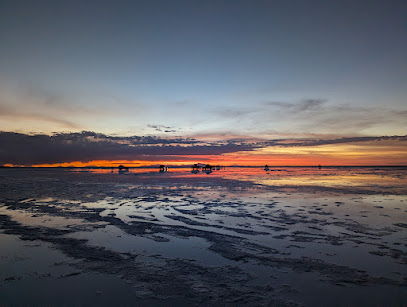
Playa Blanca - Primeiro hotel de sal da Bolívia e do Mundo
Discover Playa Blanca, the first salt hotel in the world, nestled in the breathtaking Salar de Uyuni, where nature meets luxurious comfort.
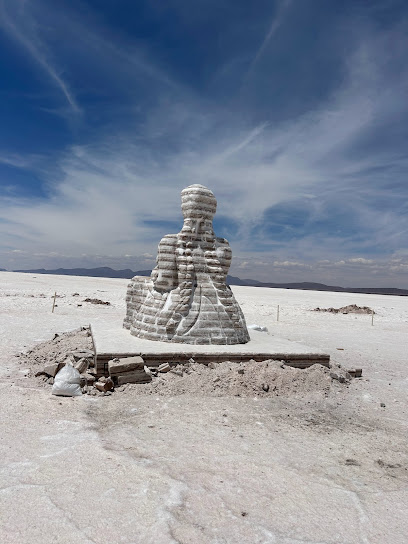
Esculturas y monumentos de Sal
Explore the stunning Sculptures and Monuments of Sal in Colchani, Bolivia, where art meets culture amidst the breathtaking salt flats.
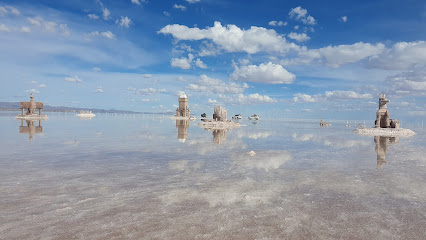
Essential places to dine
Hotel Luna Salada
Discover unparalleled luxury at Hotel Luna Salada near Uyuni - a sanctuary blending nature's beauty with exceptional hospitality.

Breakfast Nonis
Experience authentic Bolivian breakfasts at Breakfast Nonis in Uyuni—where flavor meets tradition in every bite.
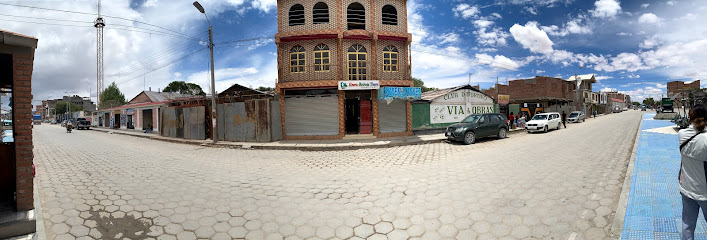
Minuteman Pizza
Discover the delightful taste of authentic pizza at Minuteman Pizza in Uyuni, where every bite is crafted with fresh ingredients.
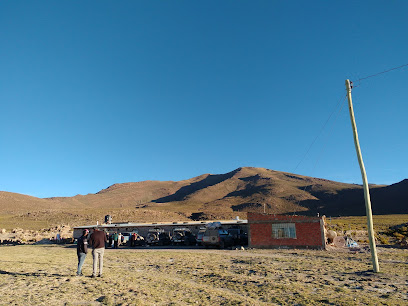
Tika | Restaurante en Uyuni
Experience authentic Bolivian flavors at Tika Restaurant in Uyuni - where traditional cuisine meets warm hospitality.
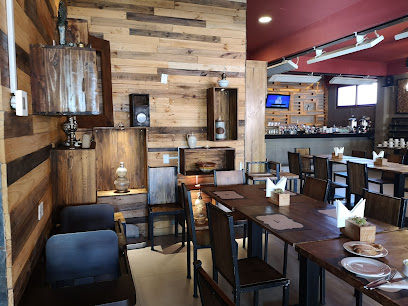
LLAMA CAFE
Discover Llama Cafe in Uyuni - a vegetarian restaurant serving delicious local flavors with a cozy atmosphere perfect for travelers.
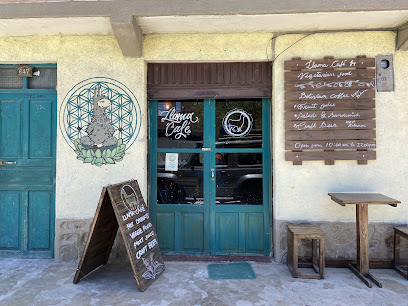
The Hot Spot Uyuni
Discover authentic Bolivian cuisine at The Hot Spot Uyuni - where local flavors meet warm hospitality in an inviting setting.
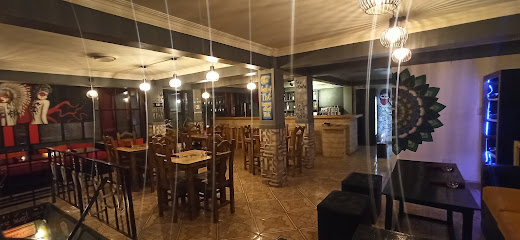
Sal Negra (Restaurant)
Experience authentic Bolivian cuisine at Sal Negra in Uyuni—where tradition meets flavor in a warm and inviting atmosphere.
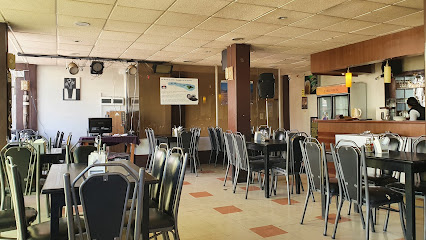
Kactus Restaurant
Experience authentic Bolivian cuisine at Kactus Restaurant in Uyuni – where every meal tells a story.
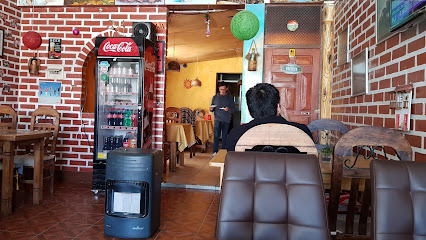
Hotaru Uyuni
Discover exquisite Japanese cuisine paired with delightful coffee at Hotaru Uyuni, where cultural flavors meet warm Bolivian hospitality.
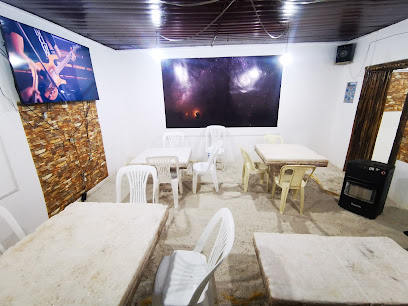
Donna Isabella
Experience the flavors of Bolivia at Donna Isabella in Uyuni – where every bite tells a story.
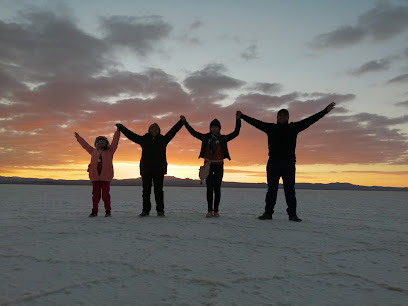
Lithium Club
Savor authentic Bolivian cuisine at Lithium Club in Uyuni – where local flavors meet warm hospitality.
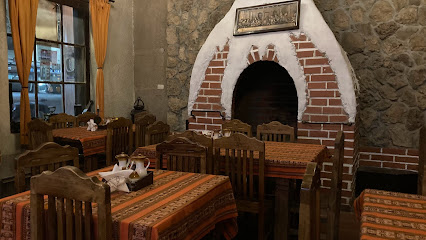
LONGMEN
Experience authentic Bolivian cuisine at Longmen in Uyuni—where traditional flavors meet warm hospitality.

Hot grill - Gibas & anticuchos
Discover authentic Bolivian flavors at Hot Grill - Gibas & Anticuchos in Uyuni; indulge in exquisite anticuchos and local wines for an unforgettable dining experience.
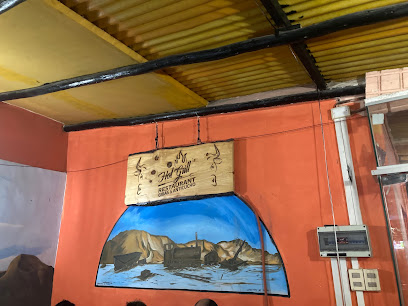
Bolivian Foods
Experience authentic Bolivian cuisine in Uyuni at Bolivian Foods – a must-visit restaurant for every traveler!
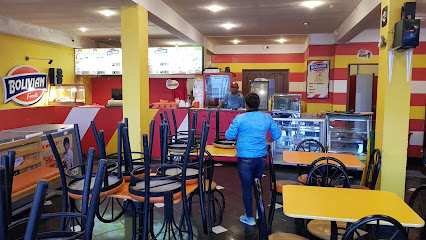
Tacuru
Discover authentic Bolivian cuisine at Tacuru in Uyuni - where flavors meet tradition in a welcoming setting.

Markets, malls and hidden boutiques
Plaza de las Banderas Uyuni
Explore the vibrant Plaza de las Banderas, a cultural gem in Uyuni showcasing the beauty of Bolivia and its diverse heritage.
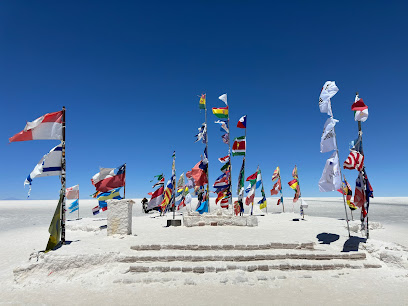
Galería Urkupiña
Explore Galería Urkupiña in Uyuni for a blend of local crafts, culture, and delicious Bolivian treats in a vibrant shopping atmosphere.

ARTE NOMADA
Discover unique Bolivian crafts at ARTE NOMADA, a charming store in Uyuni, where local artistry meets cultural heritage.
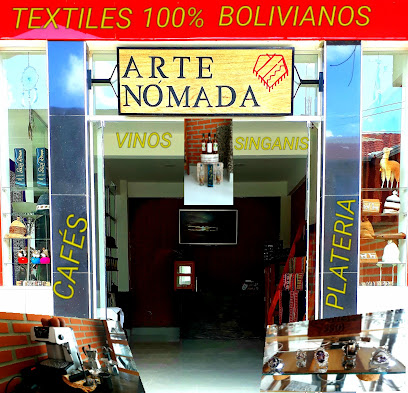
Comercial Estefany
Explore the heart of Uyuni at Comercial Estefany, a vibrant shopping mall offering local crafts, delicious food, and a taste of Bolivian culture.
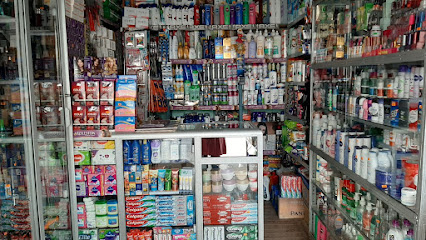
FRIAL LA ECONOMICA
Explore Frial La Economica in Uyuni for authentic Bolivian crafts, textiles, and local snacks – a treasure trove for every tourist.
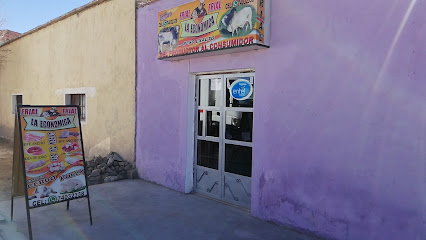
Infosat
Explore Infosat in Uyuni: Your one-stop shopping destination for all things tech in Bolivia's breathtaking landscapes.
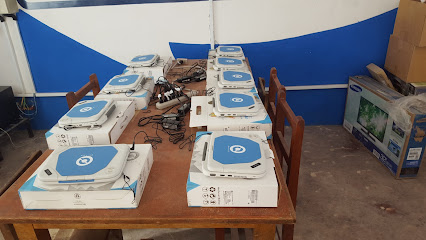
Andrajos Shop
Immerse yourself in the vibrant culture of Bolivia at Andrajos Shop, where unique clothing and accessories await every traveler.

D'Fiesta
Discover D'Fiesta, a vibrant gift shop in Uyuni offering authentic Bolivian crafts and souvenirs that capture the spirit of your travels.
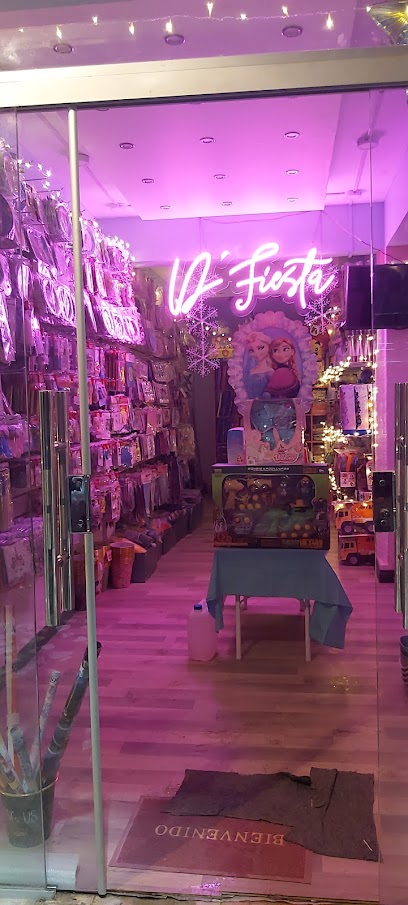
Colchani Icecream shop
Discover the delightful flavors of the Colchani Ice Cream Shop, a sweet retreat for travelers in the heart of Bolivia's enchanting landscapes.

Tiendas Naranja
Explore Uyuni’s vibrant culture at Tiendas Naranja, your go-to general store for local products and essentials.
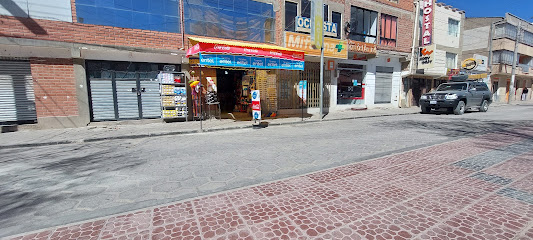
InSport Uyuni
Explore unique fashion at InSport Uyuni, where style meets the spirit of Bolivia in every garment.
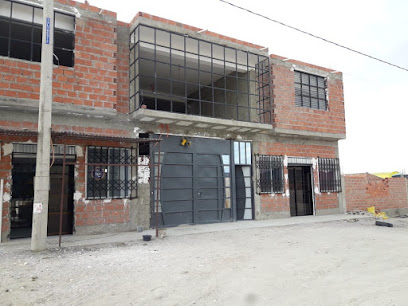
Mundo Magico
Explore the essence of Bolivian culture at Mundo Magico, a vibrant shopping mall in Uyuni filled with local crafts and unique dining experiences.

JUGUETERIA DYLAN
Explore Jugueteria Dylan in Uyuni for authentic Bolivian crafts, toys, and souvenirs that embody the local culture and charm.
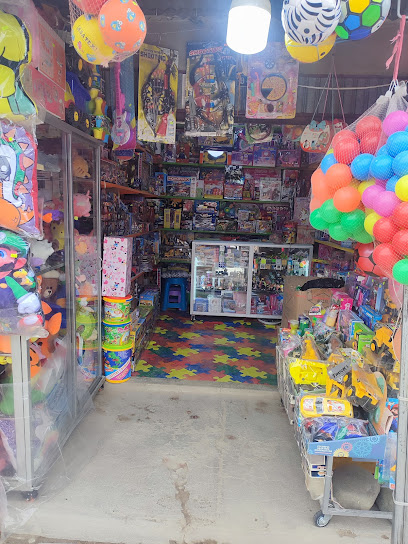
BEAUTY_STORE_UYUNI
Explore Uyuni's Beauty Store for an exceptional selection of skincare and cosmetics, blending local charm with global trends in beauty.
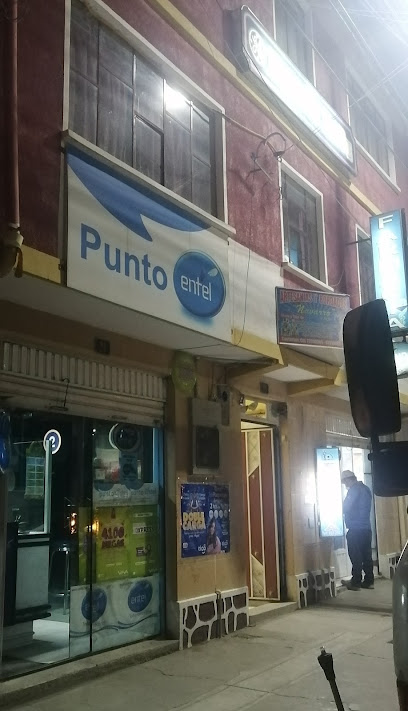
Diseño & Moda
Explore the charm of Bolivian fashion at Diseño & Moda, a unique clothing store in Uyuni offering vibrant local styles and accessories.
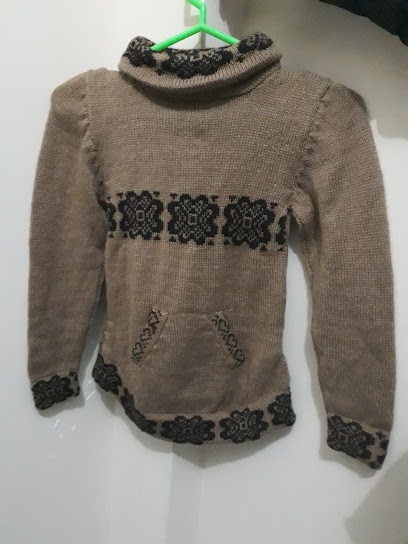
Essential bars & hidden hideouts
Kactus Restaurant
Experience the best of Uyuni dining at Kactus Restaurant, where local flavors meet international cuisine in a vibrant atmosphere.
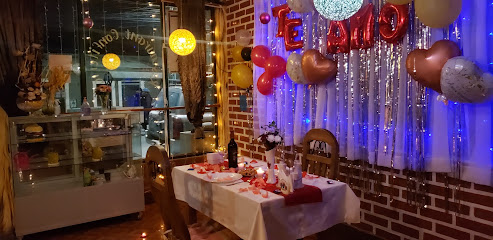
Bouquet Du Vin Vinoteca
Discover Bouquet Du Vin Vinoteca – Uyuni's premier destination for gourmet burgers, vegan delights, and exquisite wines in a cozy atmosphere.

BlueMoon
Discover BlueMoon in Uyuni: A cozy espresso bar and restaurant offering delightful local and international flavors amidst Bolivia's stunning landscapes.
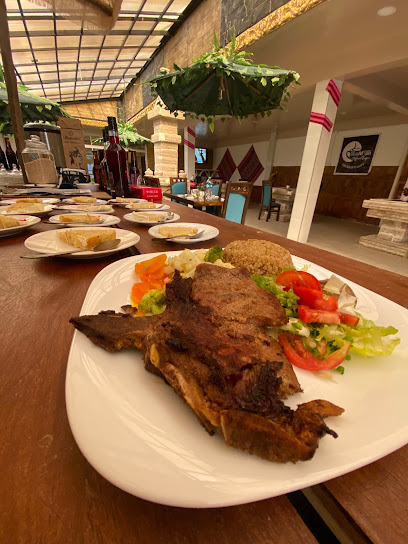
V8pubrestaurant
Experience the lively atmosphere of V8pubrestaurant in Uyuni, where local culture meets modern nightlife in a unique Bolivian bar.
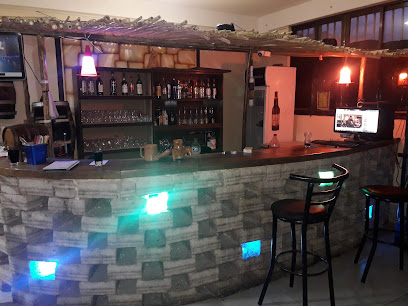
Level Club Uyuni
Discover the lively ambiance and delightful flavors at Level Club Uyuni, your go-to pub for a vibrant nightlife experience in Bolivia.
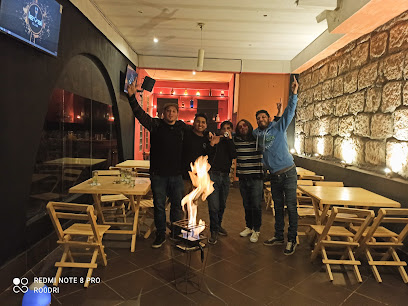
Discoteca Karaoke Jazmin
Experience the vibrant nightlife of Uyuni at Discoteca Karaoke Jazmin, where karaoke meets a lively bar atmosphere for unforgettable nights.
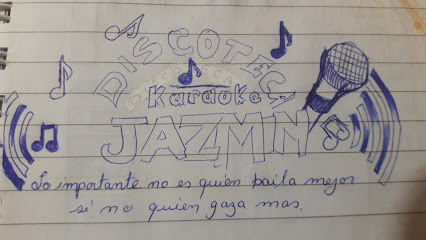
MOKSHA PUB
Discover Moksha Pub, a vibrant brewpub in Uyuni, where local flavors meet a cozy atmosphere perfect for relaxation and socializing.
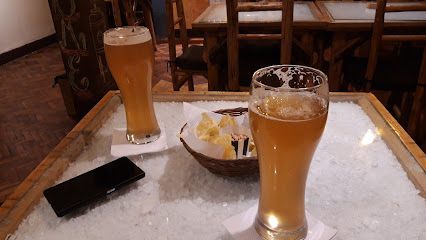
El Farolito
Discover El Farolito, a cozy bar in Uyuni offering local flavors and a friendly atmosphere, perfect for unwinding after your adventures.
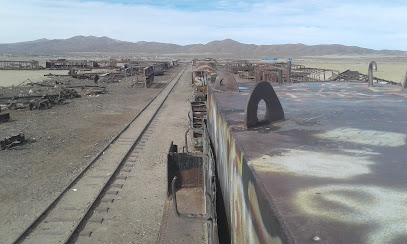
El Kairo Bar-Karaoke
Discover Uyuni's vibrant nightlife at El Kairo Bar-Karaoke, where music and fun collide in a lively atmosphere.

Bar Restaurant Uyuni
Discover the lively Bar Restaurant Uyuni, where travelers converge to enjoy local drinks and immerse themselves in Bolivian culture.
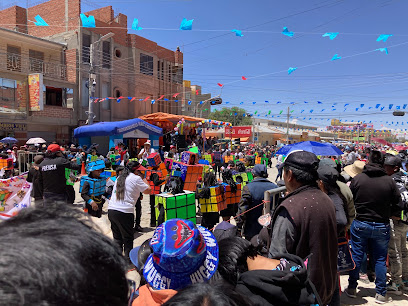
Muela del Diablo
Experience the vibrant nightlife of Uyuni at Muela del Diablo, a local bar perfect for unwinding after a day of adventure.
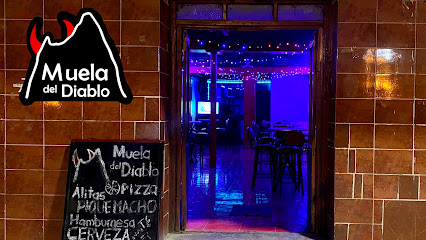
Restaurant Latino Pub
Discover the vibrant culinary scene at Restaurant Latino Pub in Uyuni, where local flavors meet Latin American cuisine in a lively setting.
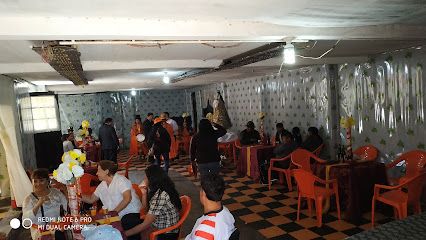
Bar,EL PUCALO
El Pucalo Bar in Uyuni: A vibrant oasis for locals and travelers, offering unique drinks and a taste of Bolivian culture.

LA TORRE
Discover LA TORRE, a cozy lounge in Uyuni, perfect for unwinding with friends and enjoying local drinks after your adventures.

LICORERIA D'NIVEL
Discover the lively atmosphere and unique drinks at Licorería D'Nivel, a must-visit bar in the heart of Uyuni, Bolivia.

Local Phrases about Salar de Uyuni
-
- HelloJupanaka
[hoo-pah-nah-kah] - GoodbyeChau
[chow] - YesArí
[ah-ree] - NoMana
[mah-nah] - Please/You're welcomePor favor
[pohr fah-vohr] - Thank youGracias
[grah-see-ahs] - Excuse me/SorryPermiso
[pehr-mee-soh] - How are you?¿Cómo estás?
[koh-moh ehs-tahs] - Fine. And you?Bien. ¿Y tú?
[byehn. ee too] - Do you speak English?¿Hablas inglés?
[ah-blahs een-glehs] - I don't understandNo entiendo
[noh ehn-tee-ehn-doh]
- HelloJupanaka
-
- I'd like to see the menu, pleaseMe gustaría ver el menú, por favor
[meh goo-stah-ree-ah behr ehl meh-noo, poor fah-vohr] - I don't eat meatNo como carne
[noh koh-moh kahr-neh] - Cheers!¡Salud!
[sah-lood] - I would like to pay, pleaseMe gustaría pagar, por favor
[meh goo-stah-ree-ah pah-gahr, poor fah-vohr]
- I'd like to see the menu, pleaseMe gustaría ver el menú, por favor
-
- Help!¡Ayuda!
[ah-yoo-dah] - Go away!¡Vete!
[veh-teh] - Call the Police!¡Llame a la policía!
[yah-meh ah lah poh-lee-see-ah] - Call a doctor!¡Llame a un médico!
[yah-meh ah oon meh-dee-koh] - I'm lostEstoy perdido
[ehs-toy pehr-dee-doh] - I'm illEstoy enfermo
[ehs-toy ehn-fehr-moh]
- Help!¡Ayuda!
-
- I'd like to buy...Quisiera comprar...
[kee-see-eh-rah kohm-prahr] - I'm just lookingSolo estoy mirando
[soh-loh ehs-toy mee-rahn-doh] - How much is it?¿Cuánto cuesta?
[kwahn-toh kwehs-tah] - That's too expensiveEs demasiado caro
[ehs deh-mah-see-ah-doh kah-roh] - Can you lower the price?¿Puede bajar el precio?
[pweh-deh bah-hahr ehl pree-syoh]
- I'd like to buy...Quisiera comprar...
-
- What time is it?¿Qué hora es?
[keh oh-rah ehs] - It's one o'clockEs la una en punto
[ehs lah oo-nah ehn poon-toh] - Half past (10)Media (10)
[meh-dee-ah (dee-ehs)] - MorningMañana
[mah-nyah-nah] - AfternoonTarde
[tahr-deh] - EveningNoche
[noh-cheh] - YesterdayAyer
[ah-yehr] - TodayHoy
[oy] - TomorrowMañana
[mah-nyah-nah] - 1Uno
[oo-noh] - 2Dos
[dohs] - 3Tres
[trehs] - 4Cuatro
[kwah-troh] - 5Cinco
[seen-koh] - 6Seis
[seys] - 7Siete
[syeh-teh] - 8Ocho
[oh-choh] - 9Nueve
[nweh-veh] - 10Diez
[dyehs]
- What time is it?¿Qué hora es?
-
- Where's a/the...?¿Dónde está...?
[dohn-deh ehs-tah] - What's the address?¿Cuál es la dirección?
[kwahl ehs lah dee-rehk-syohn] - Can you show me (on the map)?¿Puede mostrarme (en el mapa)?
[pweh-deh mohs-trahr-meh (ehn ehl mah-pah)] - When's the next (bus)?¿Cuándo es el próximo (autobús)?
[kwan-doh ehs ehl proh-ksee-moh (ow-toh-booce)] - A ticket (to ....)Un boleto (a ...)
[oon boh-leh-toh (ah ...)]
- Where's a/the...?¿Dónde está...?
History of Salar de Uyuni
-
Salar de Uyuni, the largest salt flat in the world, was formed as a result of the transformation of prehistoric lakes. Around 30,000 to 40,000 years ago, the area was part of Lake Minchin, a massive body of water that gradually evaporated, leaving behind the unique, expansive salt flats we see today. The flat spans over 10,000 square kilometers and contains an estimated 10 billion tons of salt.
-
The Inca civilization, which thrived in the Andes region from the 15th to the early 16th centuries, held Salar de Uyuni in high regard. The Incas mined salt from the flats and used it for both culinary and preservation purposes. They also recognized the strategic importance of the area for trade routes that connected different parts of their vast empire.
-
During the Spanish colonial period in the 16th and 17th centuries, Salar de Uyuni's salt and mineral resources were heavily exploited. Spanish conquerors utilized indigenous labor to extract salt and other valuable minerals, which were then shipped to Europe. This period marked the beginning of significant economic and social changes for the indigenous populations.
-
In recent years, Salar de Uyuni has gained global attention due to its vast lithium reserves. The salt flat is estimated to hold one of the world's largest lithium deposits, a critical element for battery technology. Bolivia's government has initiated various projects to extract lithium, aiming to become a major player in the global market. This has sparked debates on environmental impact and the future of local communities.
-
Salar de Uyuni holds significant cultural importance for the indigenous Aymara and Quechua people. The annual 'Festival of the Salt' celebrates the traditional practices of salt mining and the rich heritage of the region. Local communities come together to honor their ancestors and preserve their cultural identity through music, dance, and rituals.
-
Since the late 20th century, Salar de Uyuni has become a major tourist destination, attracting visitors from around the world. The stunning landscape, with its mirror-like reflections during the rainy season, offers a surreal experience. Tourism has brought economic benefits to the region, leading to the development of hotels, guided tours, and other amenities catering to international travelers.
-
Located near the town of Uyuni, the Train Cemetery is a poignant reminder of the region's industrial past. In the early 20th century, Uyuni was a hub for rail transportation, facilitating the export of minerals. However, the industry declined by the mid-20th century, leaving behind an eerie collection of rusting locomotives and railcars. The Train Cemetery has since become a popular tourist attraction, symbolizing a bygone era.
Salar de Uyuni Essentials
-
Salar de Uyuni is located in the southwestern part of Bolivia. The nearest major city is Uyuni, which has a small airport, Joya Andina Airport (UYU). You can fly directly to Uyuni from La Paz, the capital of Bolivia, with a flight time of about one hour. Alternatively, you can take a bus or train from La Paz, Oruro, or Potosí to Uyuni. The bus journey from La Paz takes around 8-12 hours, while the train from Oruro takes about 7 hours.
-
Once in Uyuni, you can take guided tours to explore the Salar de Uyuni. These tours are usually conducted in 4x4 vehicles and can range from one-day trips to multi-day excursions. It is advisable to book these tours in advance, especially during peak tourist seasons. There are also options to rent a car or hire a private driver, but ensure the vehicle is well-equipped for the challenging terrain.
-
The official currency in Bolivia is the Boliviano (BOB). Credit cards are accepted in some hotels, restaurants, and tour agencies in Uyuni, but it is advisable to carry cash, especially when traveling to remote areas or smaller towns. ATMs are available in Uyuni, but it is wise to withdraw sufficient cash before heading out on your tour.
-
Salar de Uyuni and Uyuni town are generally safe for tourists. However, like any travel destination, it is important to take standard precautions. Avoid walking alone at night in unfamiliar areas and keep an eye on your belongings in crowded places. Be cautious of scams and unlicensed tour operators. Stick to reputable tour companies for a safe experience.
-
In case of emergency, dial 110 for police assistance and 118 for medical emergencies. The local hospital in Uyuni can handle minor medical issues, but for serious conditions, you may need to be transported to a larger city. It is essential to have travel insurance that covers medical emergencies. For minor health issues, there are pharmacies in Uyuni where you can purchase over-the-counter medications.
-
Fashion: Do dress in layers and bring warm clothing, as temperatures can drop significantly, especially at night. Don't wear open-toed shoes; sturdy footwear is recommended due to the rough terrain. Religion: Do respect local customs and traditions. Public Transport: Do be respectful and give up your seat to elderly passengers. Don't eat or drink on public transport. Greetings: Do greet people with a handshake. A slight bow of the head is also a sign of respect. Eating & Drinking: Do try local delicacies and accept food offerings graciously. Don't refuse hospitality, as it is considered impolite.
-
To experience Salar de Uyuni like a local, visit during the wet season (November to April) when the salt flat turns into a giant mirror, creating breathtaking reflections. Engage with local guides who can share stories about the region's history and culture. Don't miss the opportunity to stay in a salt hotel, where everything from the furniture to the walls is made of salt. Additionally, visiting the train cemetery near Uyuni offers a unique glimpse into the area's industrial past.
Nearby Cities to Salar de Uyuni
-
Things To Do in Potosi
-
Things To Do in Sucre
-
Things To Do in Iquique
-
Things To Do in San Pedro de Atacama
-
Things To Do in Tarija
-
Things To Do in Cochabamba
-
Things To Do in Arica
-
Things To Do in Tacna
-
Things To Do in La Paz
-
Things To Do in Copacabana
-
Things To Do in Antofagasta
-
Things To Do in Santa Cruz de la Sierra
-
Things To Do in Puno
-
Things To Do in Salta
-
Things To Do in Arequipa











